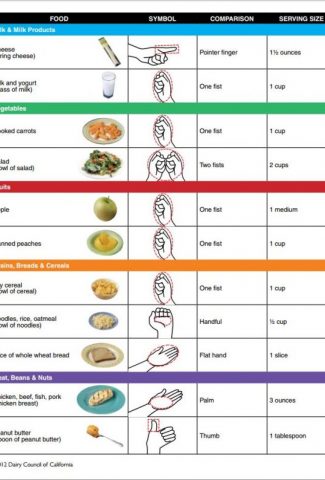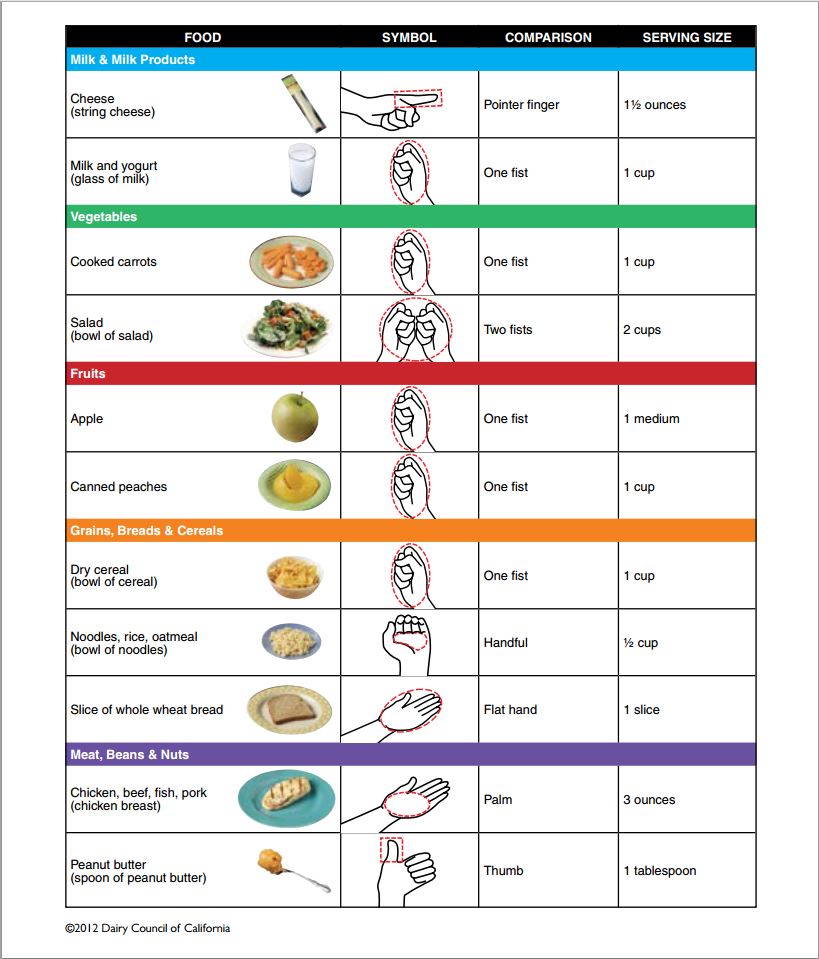
Do I overeat?
For my flight from Belgium to Los Angeles I brought extra food (nuts, rice cakes, and apples) just in case I got hungry. I try to have “healthy” alternatives with me in case I do get hungry.
When I saw the size and composition of the first meal on the plane, I was a bit disappointed. About half of the meal tray was filled with the main course of chicken with spaghetti in a tomato sauce. The remaining half was made up of a tiny salad, a roll, a triangle of Camembert cheese, and a square piece of apple cake for dessert.
As I sat in disappointment with the meal I wondered if the actual serving sizes of the items on my tray were in fact reasonable. Do I simply over-serve myself when I prepare my meals at home? Do restaurants give overly generous portions to their customers?
Serving sizes have definitely increased over the years, both at home and in restaurants. In restaurants we do not feel we are receiving value for our money unless we are served generous portions. The portion sizes in the US are notoriously huge.
The ever-increasing portion sizes have distorted our perceptions of what is a normal serving size. As a result, even if we eat healthfully and exercise regularly, we are probably still overeating because of our large portion sizes. For example, I am sure I eat more than twice the amount of food that I need to each day.
What do Dietary Guidelines recommend?
Governments around the world require nutritional information to be included on labels of many packaged food products so that we consumers can make informed “healthy” choices. Many governments also provide nutritional or dietary guidelines to help us understand what we should eat to remain healthy. The rules governing food labels and nutritional guidelines keep evolving. For example, in the United States, the Dietary Guidelines for Americans, 2010 (“2010 Dietary Guidelines”) moved from a food pyramid format to a “my plate” format. The new guidelines feature a person’s plate and show in a pie-chart fashion how much of the plate should be dedicated to grains, vegetables, fruits and protein, with a glass on the side of the plate showing how much dairy should be consumed. Basically, the plate of each person over the age of 2 should be composed of: 30% grains, 40% vegetables, 10% fruits, 20% protein foods plus 1 glass of skim milk or 1 cup of yogurt.

The 2010 Dietary Guidelines included 3 major goals:
- Balance calories with physical activity to manage weight,
- Consume more fruits, vegetables, whole grains, fat-free and low-fat dairy products, and seafood,
- Consume fewer foods with sodium (salt), saturated fats, trans fats, cholesterol, added sugars, and refined grains.
I highly recommend that you visit the Choose My Plate site provided by the US Food and Drug Administration to find many useful tools and tips for making healthier food choices. In the coming days I will add some useful items on my Tools & Tip page and will continue to update this page regularly with new materials. Please visit this site again to see these new resources.
Is the answer to weight control really in our hands?
Now that we understand what we should be eating, let’s look at how much we should be eating. This brings us back to serving sizes.
In the US the Food and Drug Administration (FDA) adopt regulations to help food producers determine the appropriate “serving size” for their packaged food products. The recommended serving sizes are determined in reference to the amount of a food product “customarily consumed at one eating occasion”. Food labels in the US express the serving size as a common household measure followed by the equivalent metric quantity in parenthesis (e.g., “1/2 cup (112 g)”).
I was surprised to learn that:
- the serving size indicated on the label is determined by methods set out in the food labeling regulations, and
- this value informs us of how much is recommended that we eat of this product during a single meal.
I erroneously believed that it was the food producers who determined on their own the appropriate serving sizes for their products. I also believed that food producers routinely reduced the serving size of their products intentionally in order to make the nutritional values of their products look better. I therefore often ignored the serving size indicated on the labels and would thus eat several times the recommended serving size in a single meal (or as a snack)!
Although the US food labeling rules provide helpful information to guide consumers to make healthy food choices for a given meal (by providing the information in serving sizes), the information on labels often makes comparisons with food from other food product categories very difficult, as the serving size may not be the same. In this respect, I prefer the rules applicable in the European Union which require all food labels to express the nutritional value for 100 grams of the given product. By using a common measuring unit to express the nutritional value of a product, comparisons are extremely easy. I also find it much more straightforward to determine the overall nutritional value of the item.
If the goal is to provide consumers with information to help them make healthy food choices, legislators should learn from both the US and the EU rules by requiring labels to express the nutritional values in terms of both serving size and 100 grams. By requiring both measures to be included, consumers could quickly understand the serving size being recommended of a given product for a single eating occasion as well as be able to compare this value to the value of other products.
We must remember that food labels are not required for some food products and beverages, fresh food and other non-packaged food. Restaurants in most parts of the world also do not need to provide customers with any nutritional information to guide their food choices. In these cases, we must turn to other resources to determine the serving size and nutritional values of what we are eating.
Since we do not generally walk around with reference tables in our pocket, nutritionist have developed many tools to help us remember how much is recommended as a serving size for many common food products. One extremely easy and useful tool relies on the use of our hands to guide us. For instance, the following table provided by the Dairy Council of California gives us a visual idea of how much a recommended serving size represents for typical items in each main food group.

The above visual image will help us manage our food portions and avoid overeating. The main tool that we need to guide our food choices is therefore in our own hands, literally. As we always have our hands with us when we eat, we will always have on hand (pun intended) what we need to keep our portions and our weight in control.
I aim to try to pay closer attention to the size of my food servings over the next month (in the US and back in Belgium). I will let you know the effect this has on my weight, my energy levels, and my food budget.
I hope that you will find this post and the other resources in the Tips and Tools page useful in understanding better food labels and in guiding your food choices. Please let me know below in the comments what you like and dislike about this post so I can improve the information I provide on this site.

Leave a Reply